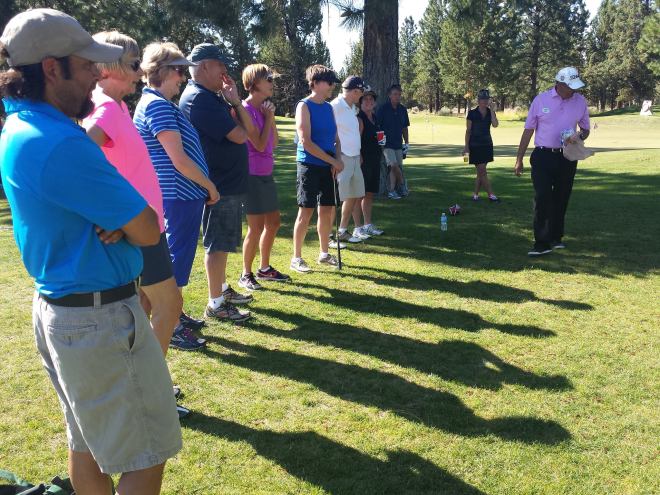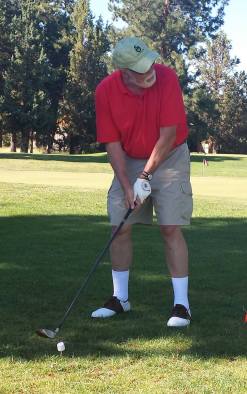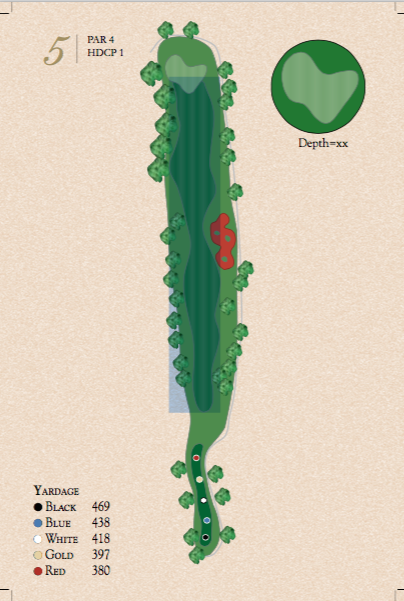Aspen Lakes pro the only certified AimPoint instructor in Central Oregon
Putting can be one of golf’s great mysteries. It seems so easy. What’s so hard about slowly rolling a ball toward a hole down a relatively smooth surface, right?
Yet, it is on the greens that so many amateur golfers struggle most. According to research in Golf magazine: “High handicappers require about 30 percent more putts — or roughly 8 strokes — per round than pros do.”
For amateurs, the culprits are many, from poor strategy to less-than-ideal speed to an inability to “read” the greens correctly. Perhaps the key to improving on the greens is to whittle that list of culprits down.
We know instinctively that the more time we devote to the practice green the better our putting stroke will be. But learning how to properly read a green is a skill not many higher handicappers possess. That is why learning how to read greens using the AimPoint Express method can be so valuable.
Pioneered by Mark Sweeney, an amateur golfer who himself struggled with putting, the AimPoint Express method works to simplify reading greens by teaching golfers how to feel the slope of the green with their feet and how to use your arm and fingers to aim. AimPoint Express has quickly gained favor on the professional tours, used by such players as Adam Scott and Christina Kim. (If the name sounds familiar it might be because AimPoint Technologies, which Sweeney founded, produces some of those graphical marks that show viewers the line of a putt during professional golf broadcasts.)
It is a method that Aspen Lakes’ PGA Director of Player Development Howie Pruitt, the only certified AimPoint instructor in Central Oregon, knows well.
“AimPoint is just a simple way to read greens,” said Pruitt, who earned the certification in January 2015. “You will still have hit the putt at the right speed and on the right line to be a successful putter. But by eliminating one of the factors that lead us astray on the greens, most golfers quickly save strokes.”
Trusting that gravity is a constant, AimPoint attempts to define the correct putting line by relying on three basic factors: distance from the hole (calculated by pacing), the amount of slope (which is usually a 1 percent to 4 percent grade, judged by feel and practice), and the angle of the putt across the slope (uphill, downhill, etc.), according to a Bend Bulletin story.
It might sound complicated, but in actuality AimPoint is a relatively simple method to learn, at least with the right instruction. In fact, Pruitt says it only takes about an hour for a golfer to get reasonably proficient.
Once adopted, the benefits become clear. By understanding the basic physics of putting, golfers gain more confidence. In turn, that confidence can lead not only to a better line toward the hole, but more consistent strokes that improve pace and lead to better decision-making around the greens.
In other words, it will save strokes.
“As a player, it definitely improved my confidence,” Pruitt said. “ I knew exactly what the ball was going to do once it started to roll.”
Private, group lessons, classes and clinics with Pruitt are all available through the Aspen Lakes PGA Learning Center. Call the Aspen Lakes pro shop at 541-549-4653 for more information. To book a tee time call the golf shop or book online.



 Feedback from golfers has been immensely positive so far this year
Feedback from golfers has been immensely positive so far this year Three clinics in May taught by Howie Pruitt, Aspen Lakes’ director of player development, will lead to better golf
Three clinics in May taught by Howie Pruitt, Aspen Lakes’ director of player development, will lead to better golf


